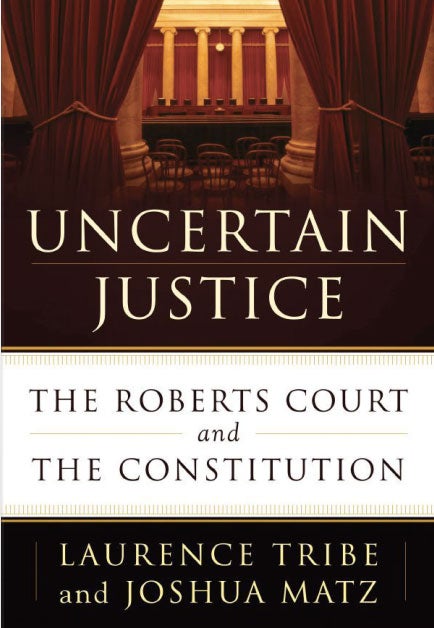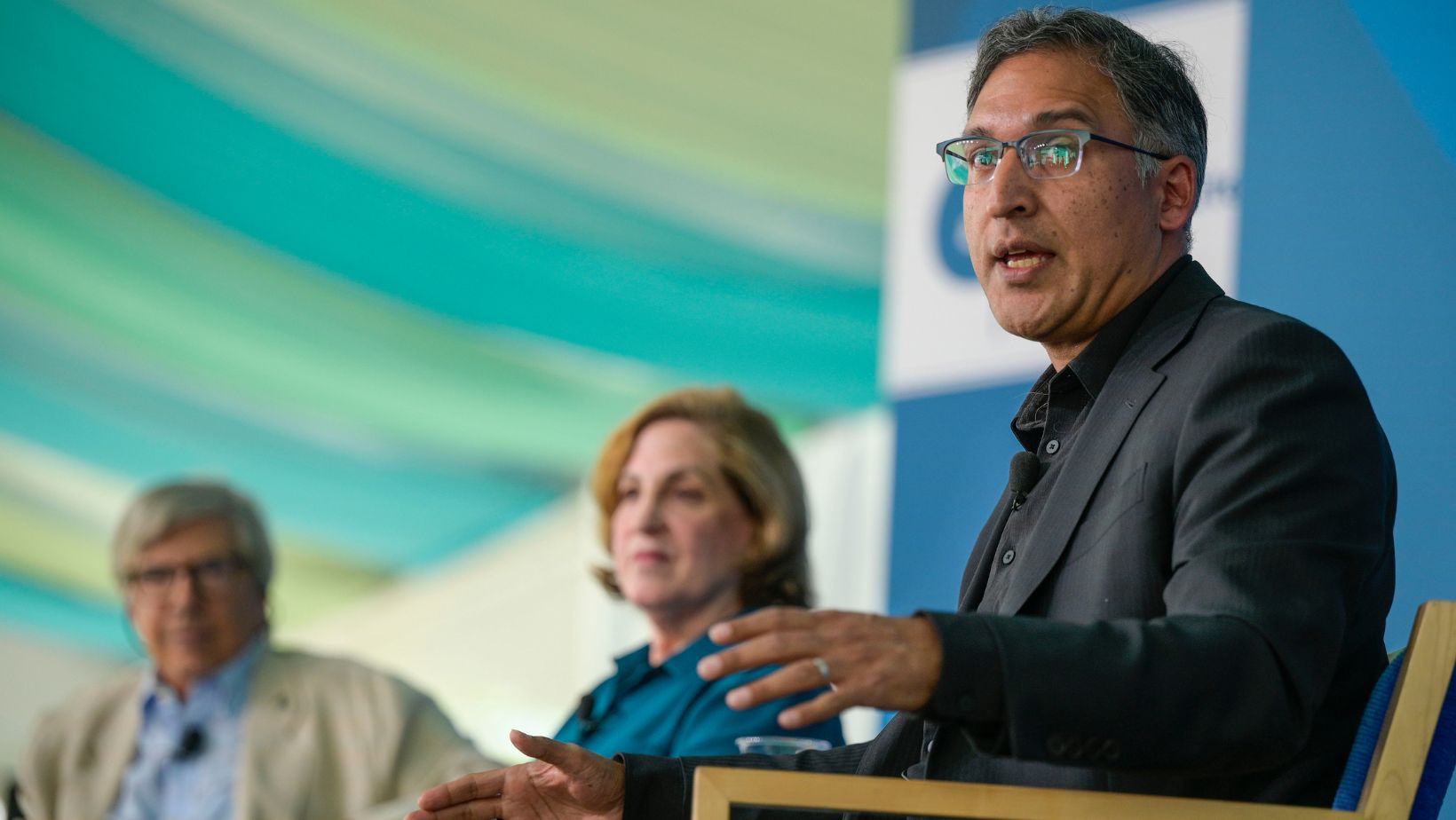Two Constitutional Scholars’ Take on the Roberts Court
Two of our nation’s most pre-eminent constitutional scholars, Harvard law professor Laurence Tribe and University of California at Irvine Dean Erwin Chemerinsky, have recently written excellent books about the Supreme Court. As expected given their track records, both authors expertly describe complex Court decisions and related subjects in highly readable fashion. The contrasts and the similarities in their accounts are particularly instructive.
I.
 In his book, The Case Against the Supreme Court, Chemerinsky examines the Supreme Court throughout American history in order to support his thesis that the Court has often been wrong and has failed in what he describes as one of its primary duties – to “protect the rights of minorities who cannot rely on the political process” and to “uphold the Constitution in the face of any repressive desires of political majorities.” (10)
In his book, The Case Against the Supreme Court, Chemerinsky examines the Supreme Court throughout American history in order to support his thesis that the Court has often been wrong and has failed in what he describes as one of its primary duties – to “protect the rights of minorities who cannot rely on the political process” and to “uphold the Constitution in the face of any repressive desires of political majorities.” (10)
Although this may underemphasize other roles of the Court (such as serving as referee in disputes between Congress and the president) there can be little question that Chemerinsky has identified a key role of the Court. And there is also no question that Chemerinsky has powerfully described a considerable number of historical cases where conservatives and liberals alike would today agree that the Court fell short— cases such as Buck v. Bell on forced sterilization, Dred Scott on slavery, Korematsu on detention of Japanese-Americans in World War II, and Lochner and related cases that struck down New Deal and similar legislation, to name just a few. He praises Warren Court rulings like Brown v. Board of Education, but contends that the Court could and should have gone further in promoting equal educational opportunity and other areas.
The most unique aspect of Chemerinsky’s book is his series of proposals for reforming the Court. The first proposal, which he notes should find support among conservatives and liberals alike, is for the “justices, lawyers, academics, and society” to more clearly define and embrace the important role of the Supreme Court to “enforce the Constitution against the will of the majority” when necessary. (298) Some of his ideas have been long championed by other writers. These include televising Supreme Court hearings, holding justices to the same ethics rules that apply to lower court judges, and pushing Court nominees to state their views on broad constitutional issues at confirmation hearings. Other suggested reforms are aimed at the internal workings of the Court but would likely be very unpopular with justices of any ideological view. Imagine requiring the Court to provide a brief explanation when they decide not to review the 10,000 cases they decline each year, or enacting “presumptive” word and page limits on written opinions. Chemerinsky advocates both.
II.
 Writing with his former student Joshua Matz, Tribe’s book takes a narrower focus than Chmerinsky’s. Uncertain Justice: The Roberts Court and the Constitution concentrates on the Court after 2005, when John Roberts became chief justice. Tribe and Matz review both high profile cases on issues like gun control and campaign finance, as well as less publicized cases on issues like citizens’ access to the courts and prisoners’ access to newspapers. But beyond cases and rulings, the book paints a detailed written picture of each justice, both individually and as they interact with their other eight colleagues to form sometimes shifting majorities on the Court. If there is any shortcoming in the book, it is the relatively scant attention it pays to the non-shifting majorities in the more politically charged cases that the Roberts Court has reviewed and to what that means for the future of the Court.
Writing with his former student Joshua Matz, Tribe’s book takes a narrower focus than Chmerinsky’s. Uncertain Justice: The Roberts Court and the Constitution concentrates on the Court after 2005, when John Roberts became chief justice. Tribe and Matz review both high profile cases on issues like gun control and campaign finance, as well as less publicized cases on issues like citizens’ access to the courts and prisoners’ access to newspapers. But beyond cases and rulings, the book paints a detailed written picture of each justice, both individually and as they interact with their other eight colleagues to form sometimes shifting majorities on the Court. If there is any shortcoming in the book, it is the relatively scant attention it pays to the non-shifting majorities in the more politically charged cases that the Roberts Court has reviewed and to what that means for the future of the Court.
Uncertain Justice is at its best when, beyond offering a careful explication of the justices’ conflicting views on cases and issues, Tribe’s own assessment of which argument is best comes through. Take for example, Tribe’s devastating analysis and critique of a series of divided Roberts Court decisions on access to justice for workers and consumers: Tribe concludes that private arbitration is becoming “dominant,” that “class actions face a mortal threat,” and that “the role of courts as places in which to hold businesses accountable for violating the law has diminished.” (288-89) And in the midst of chapters devoted to subjects like access to justice and gun violence, Tribe convincingly demonstrates the fallacy of Justice Scalia’s view that the Constitution’s original public meaning should provide the answer to every contemporary Constitutional question. He similarly handles Chief Justice Roberts’ claim that a justice should function like a neutral umpire. As Tribe explains, claiming that judges should be umpires conveys “the mistaken impression that judges do not make value-laden choices.” This view is mistaken, Tribe points out, because “…in many cases that the Court agrees to review, the simple truth is that totally ‘neutral’ positions do not exist.” (287-88)
There is no question, however, that a major theme of the book is the suggestion that the justices of the Roberts Court are not rigidly divided along partisan ideological lines and that instead they form shifting alliances among conservative and moderate justices to make case-by-case decisions. But as Uncertain Justice itself recognizes, this is not an either-or question. Sometimes Tribe suggests that the justices do make ideological decisions, and he specifically acknowledges that the justices’ policy views and political backgrounds “are relevant and can be influential” in their decision-making. (319). As he explains, “Supreme Court justices inevitably have agendas: beliefs about what the law is, what it should be, and how to move it that way.” (288)
What the book fails to do, however, is to explain the extent to which ideological views have clearly led to fairly constant 5-4 majorities on the Roberts Court in more politically charged cases. Since Roberts and Alito have taken their seats on the Court bench, the justices have handed down 30 5-4 decisions on campaign finance regulation, second amendment gun rights, federal anti-discrimination laws, consumer and worker access to the courts, reproductive rights, affirmative action, school desegregation, and church-state separation. Most of these are discussed in Uncertain Justice. But unlike decisions in controversial but less politically charged areas like privacy and free speech, the Court divided in these 30 rulings in exactly the same way: The five conservative Republican-appointed justices voted to rule unconstitutional restrictions on campaign spending and gun rights but to severely limit anti-bias laws, court access, reproductive rights, school desegregation, and church-state separation. All four moderate Democratic-appointed justices dissented in each case.
Tribe carefully explains two areas where there have been important exceptions to this pattern. With respect to LGBT rights, in accord with his previous positions, Justice Kennedy has joined with the four moderate justices to form 5-4 majorities upholding LGBT rights, particularly in the case well described by Tribe in which the Court struck down the Defense of Marriage Act. In precise but engaging detail, Tribe also describes the 5-4 decision upholding important parts of the Affordable Care Act, in which Roberts agreed with the four moderate justices in opposition to the Court’s conservatives, but also carefully avoided leaving behind a precedent protecting similar future legislation.
Just as in the Affordable Care Act case, the rationale of the five justices in the majority in the 30 conservative 5-4 rulings was not the same. As Tribe points out, for example, the five conservative justices wrote four different opinions supporting the result in the Citizens United holding striking down campaign finance legislation. But all five agreed on the result in this broad range of cases, just as all four of the more moderate justices disagreed. And as Tribe suggests in his discussion of most of these issue areas, these results often have a significant impact on the lives of Americans. A more focused examination of this question and its implications for the Court’s future could have been an important part of this book.
III.
When he focuses on the Roberts Court, Chemerinsky also provides descriptions of each of the current justices, which explicitly refer to their ideological orientations and the role of Justice Kennedy as a usually conservative but sometimes “swing justice.” (160) Chemerinsky zeroes in on some of the same decisions discussed by Tribe, and similarly expresses his disagreement with the majority in the cases where Tribe does the same. But Chemerinsky goes on to explicitly and cogently criticize the Court’s 5-4 decisions on issues like campaign finance and the first amendment, voting rights, and voluntary school desegregation. Like Tribe, he convincingly refutes the notion that justices are like umpires, noting that it is the broad language in the text of the Constitution that gives justices “so much latitude.” (338) And like Tribe, he explicitly notes that each justice was chosen by a president who clearly considered the likely views of the nominee on constitutional issues.
Reviewing the highlights of Chemerinsky’s broader survey and some of the gaps in Tribe’s assessment of the current Court brings to mind the more transformative reforms suggested in the first author’s book. Implementing these ideas would require an extraordinary change in America’s current political climate and at least one constitutional amendment. Still, these far-reaching ideas are worth contemplating: 18-year non-renewable term limits for justices and nonpartisan merit selection panels that would effectively limit a president to one of three choices for each Court vacancy. Chemerinsky explains clearly and persuasively each of his proposals, and a careful analysis of each is far beyond the scope of this review. That said, the broader intent of these ideas – to at once acknowledge and hopefully drain out some of the partisanship that has seeped into the Court from our more overtly political branches of government – is a noble goal. And at a time when public approval of how the Court handles its job has dropped from over 60% to less than 45%, careful consideration of these and other proposals concerning the Court is clearly warranted.

